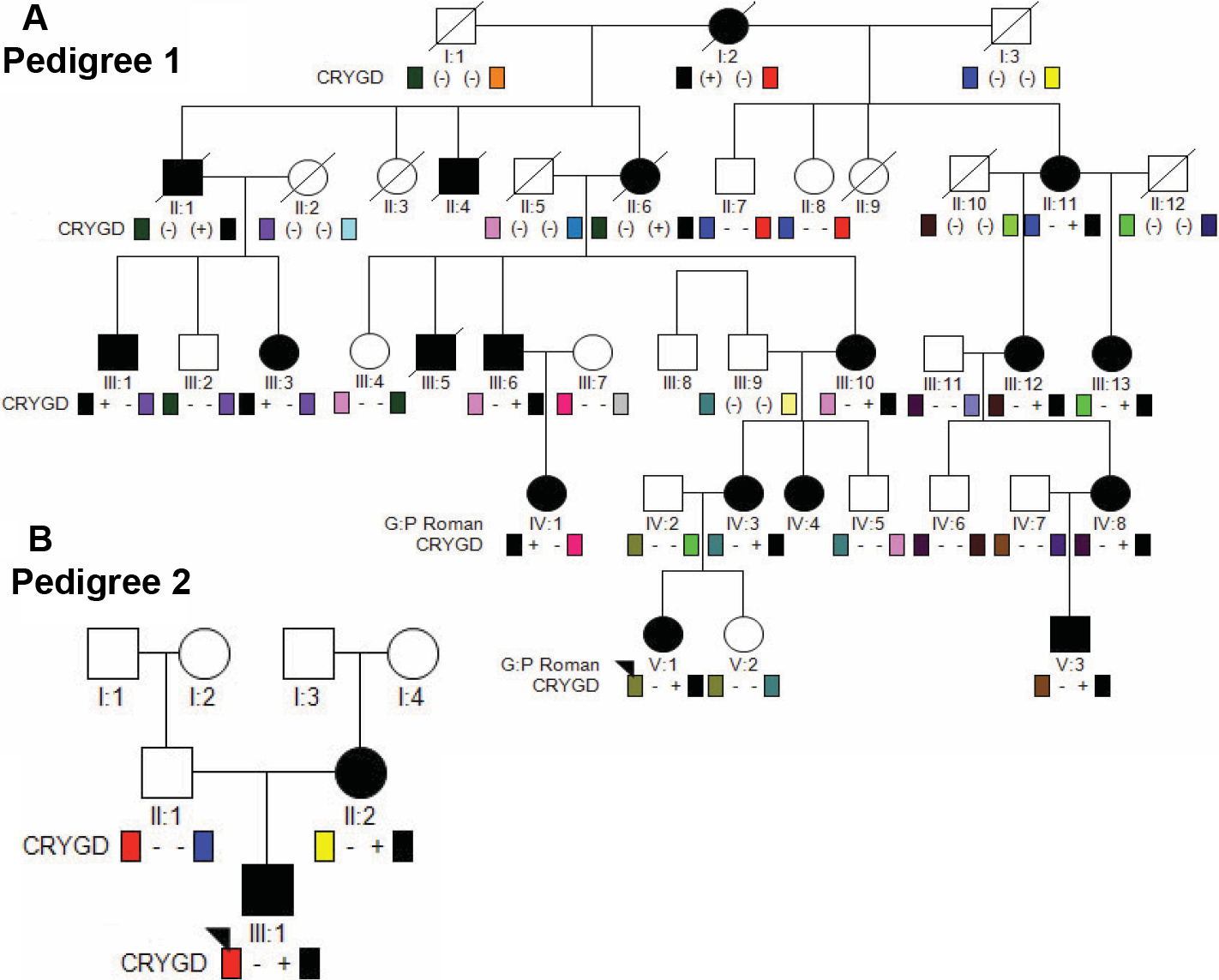Figure 2. Schematic representation of
pedigrees. For each pedigree, squares and circles denote males
and females, respectively. Filled squares and circles denote
that the individual had cataracts. Diagonal line denotes
deceased family member. The proband for each pedigree is
indicated by an arrowhead. A: Pedigree 1. For each
participant, ‘+’ indicates presence of the CRYGD 109 C→A
mutation (R36S) and ‘-‘ indicates a wildtype allele. Note that
the heterozygous CRYGD mutation segregates with the
dominant crystalline cataract phenotype. B: Pedigree 2.
The affected mother and son harbor a heterozgous CRYGD
109 C→A mutation, while the unaffected father has two wildtype
alleles.

 Figure 2
of VanderVeen, Mol Vis 2011; 17:3333-3338.
Figure 2
of VanderVeen, Mol Vis 2011; 17:3333-3338.  Figure 2
of VanderVeen, Mol Vis 2011; 17:3333-3338.
Figure 2
of VanderVeen, Mol Vis 2011; 17:3333-3338. 